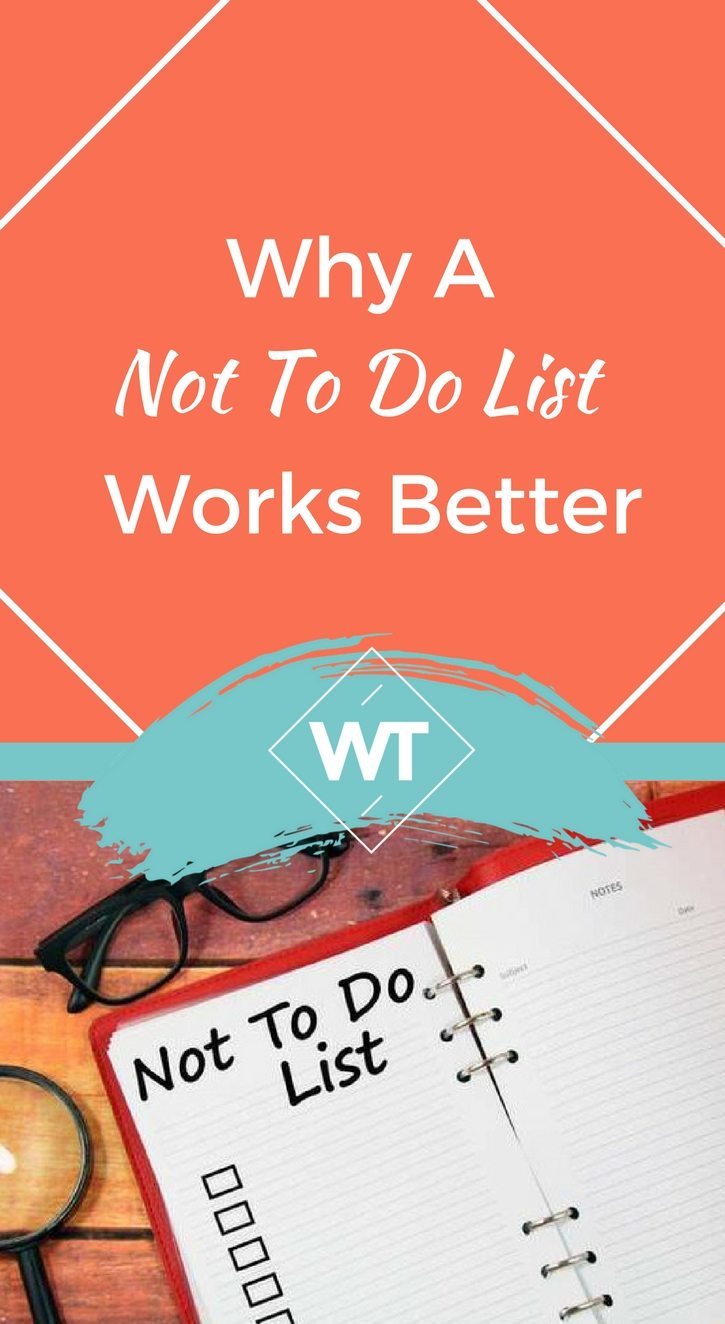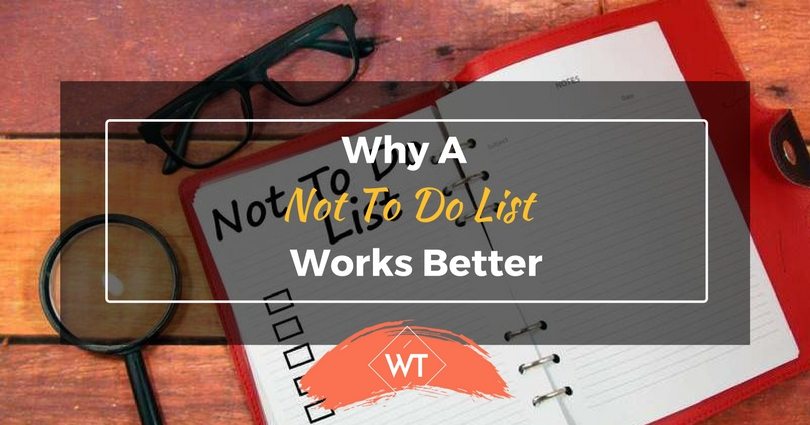Why A Not To Do List Works Better

Welcome to your brand new “Not To Do List”. For those of you intent on list-keeping (and yes, I know a few of you are set in your ways) think of this one as an anti-to-do list (or in other words: don’t do it). You might even be partial to the name “to-don’t,” as opposed to the name, “to-do.” Either way, our point is the same: for most of us, our lives are already overrun. Perhaps the last thing we need to do is add something else.
So let’s jump in and figure this out, shall we?
Why a To-Do list doesn’t work?
Starting with the idea of a “to-do” list, we have a bullet-point or sometimes checklist of specific tasks we need to get done. These will be itemized very specifically, saying things like “buy milk” and not just “go to the store.”
They’re incredibly specific, and because of that they can become overwhelming. In fact, most people never finish their to-do list.
Now, of course, the “to-do” list isn’t actually the worst way to manage your life. Not having any plans at all, is much worse.
Yet, ironically, having a “to-do” list is not the same as having a plan. In fact, it’s quite the opposite:
- It’s random in the order things appear;
- it doesn’t give any mention of what’s more important than what;
- and it doesn’t tell you when something is going to or needs to get done.
It is simply a generalized list of all the things you have to do.
That’s not a plan. That’s a list.
A better way: The “Not To Do List”
As you can probably tell, I’m not a fan of to-do lists, and in fact I have a much better system I prefer (and we showcased this in our Best Life Course…which will be coming soon!). In a nutshell, I much prefer adding well-thought-out goals to my calendar instead of making a random list.
All that aside, however, today I’m going to offer you a different type of list. The “Not To Do List”. It’s clever, many people find it useful and in some cases the effects are far-reaching.
So, why this list and not the other? Well, for one, the granularity of the “to-do” list makes it a challenge. What I mean by that is sometimes it can be overly-specific. And while, yes, we need to know what things need to get done but an itemized laundry list isn’t the way to run a life.
So then, that means it isn’t a bunch of specific work items that show up on our new “Not To Do List”… but instead, general, more-strategic “do-nots” that appear on this list.
For example, strategic things for us to stop doing are:
- Stop saying YES, when we really want to say NO
- Stop procrastinating
- Stop doing the work we don’t want to do when we know we can delegate it instead
- Stop being sucked into social media
By first taking a closer look at things that have been roadblocks—are barriers—for us, we are able to understand what can now go on this new list. Because they are thematic, because they are strategic, you’re not dealing with something as specific as “buy milk,” means you have things you can apply to a wider range of circumstances. And that’s what makes this list more valuable. This is what brings us to the next key element of the “Not To Do List”.
The Pareto Principle
You might be familiar with this idea.
It’s state basically that 80% of your results come from 20% of your efforts. So the best practice is to identify the key things that you should be doing and avoid the others.
And in fact, this applies two-fold in our case. Not only are we identifying the 20% of activities that we should be doing, but by using this “Not To Do List” we are also identifying (perhaps even more than) the 20% we should not be doing. This gives us an additional 80% boost on both ends of the spectrum. The net effect is tremendous.
That’s another key reason that a list like this is needed.
But in fact there’s even a more subtle reason that you may find more helpful to your life. Usually the things that we add to our “Not To Do List”, are things that sap our energy. Things that drain us. Things that we just don’t like doing. The emotional boost that we get from removing those things from our life is also tremendous. It gives us the energy to do more of the things that we do enjoy.
Practical examples from life
The smart observer may have noticed that our site is divided up into six different dimensions of life. I like to call them the Wisdom Six. I’m going to use those for my example and you’ll see this, below.
Ideally, let’s see if we can identify the things that we don’t want in each of the sections of our life. This way our net effect will be greater not only because of everything I’ve already mentioned, but also because it will affect us more completely by targeting more areas of our lives.
Because I’m a real person and not just some random “talking head” on the internet, the only way I know how to do this is by applying it to myself. What things, in my own life, would I want on my own “Not To Do List”? So I will take them one by one, below.
My list…and some ideas to get you going
- Self Growth: I will stop always improvising, and start working off a plan.
- Relationships: I will stop trying to “fix” everything for my wife, so she can do things the way she likes them to be.
- Finances: I will stop leaving our savings to chance.
- Health/Fitness: I will stop putting off my exercise start-date; there is no day better than today.
- Career/Business: I will stop leaving things till the last minute.
- Lifestyle: I will stop being so hard on myself if I don’t hit a goal.
Well, that’s a pretty complete list. Have I missed anything? Try it out for yourself. What things would you add to this “Not To Do List”?









Leave a Reply